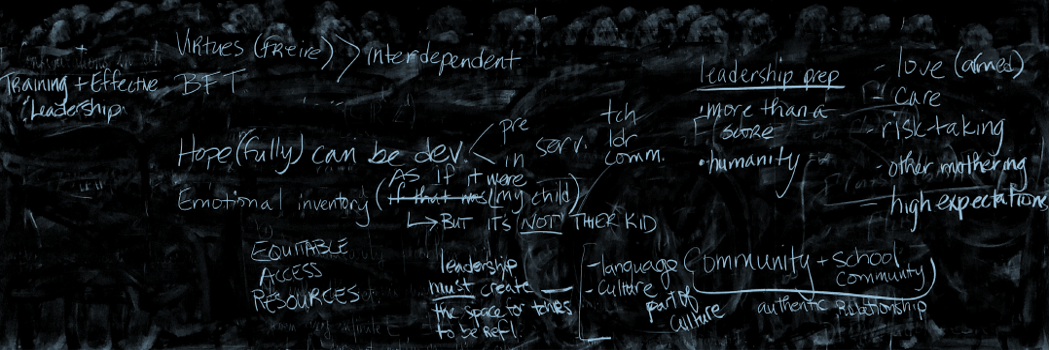I really appreciated the synergy and alignment of this week’s articles and videos, all focused on counter-stories as radical care. Tara Yosso’s article on “Whose culture has capital?” takes a strong and welcome stance that the community cultural wealth framework she developed is intended to counter the all-too-common deficit views of communities and students of color. She posits, instead, the array of cultural knowledge, skills, abilities, and contacts possessed by socially marginalized groups and offers a compelling framework that outlines six kinds of capital (aspirational, linguistic, familial, social, navigational, and resistant) that comprise community cultural wealth. Yosso’s framework draws heavily on Critical Race Theory, including the work of Gloria Ladson-Billings, William Tate, and Daniel Solórzano.
In the article by Katherine Rodela and Claudia Rodriguez-Mojica, we find a rich application of the Yosso framework to a research study on educational leadership in a specific and changing context (the Pacific Northwest—Oregon and Washington State). The case studies, which include extensive quotes from interviews with four Latinx educational leaders, illustrate the relevance both of counternarratives and of Yosso’s expansive view of community cultural wealth. It is heartening to read how “They often saw themselves in the students they serve now” (p. 300) and equally disheartening to learn about the many obstacles these educators face in their struggles with white administrators as they pursue an equity agenda that is often misunderstood or trivialized.
The videos (The Graduates/Los Graduados) illustrate every form of community cultural capital described by Yosso, especially aspirational and familial, and offer the viewing public very strong counter-stories to those portrayed by Fox News (and too many others) about Latinx students and their families. From a programmatic perspective, I was particularly intrigued by the interventions that seemed to be making a difference, such as Reality Changers in the San Diego episode and the Peer Jury approach used in Chicago—good examples of care in action.



